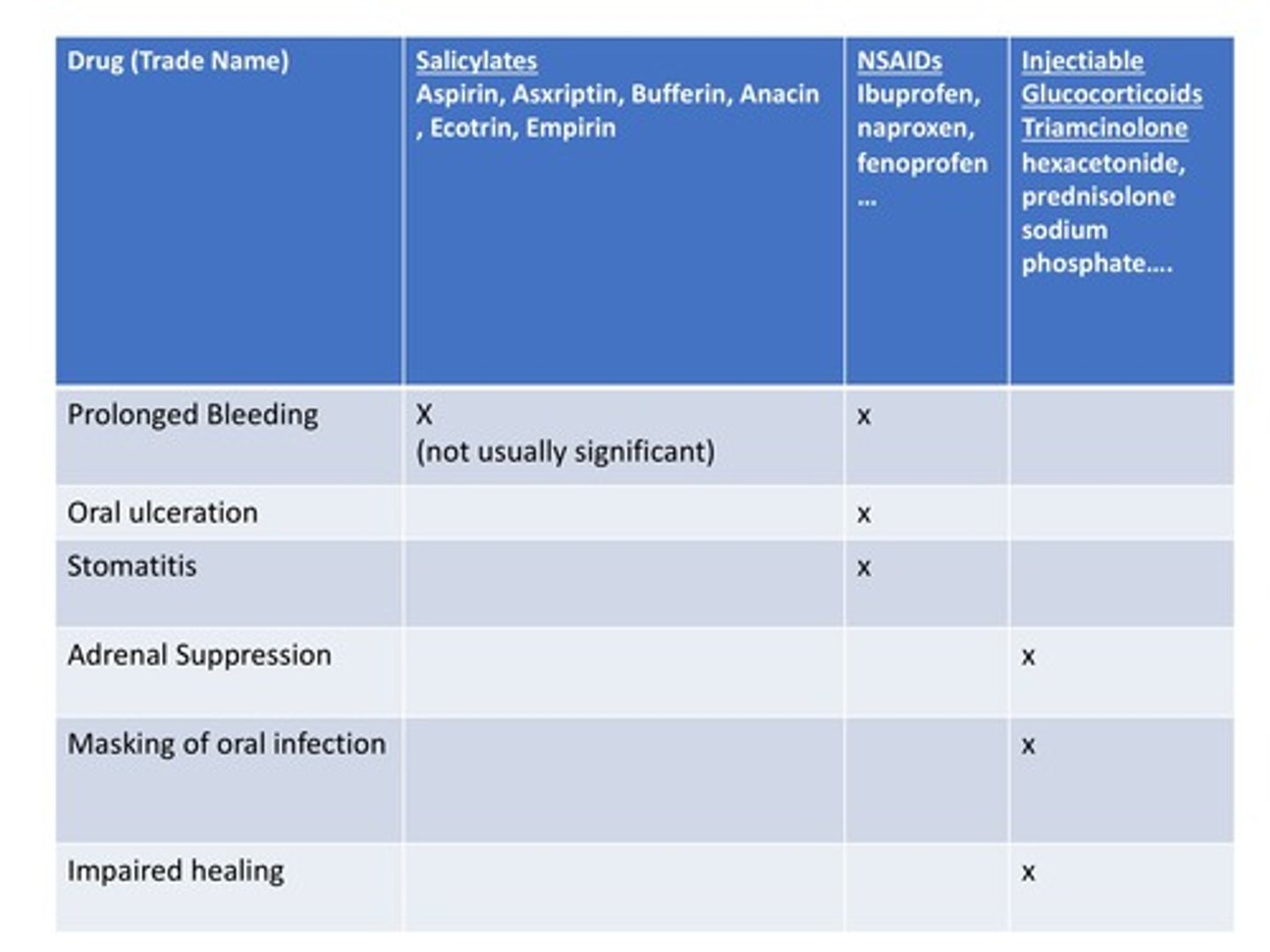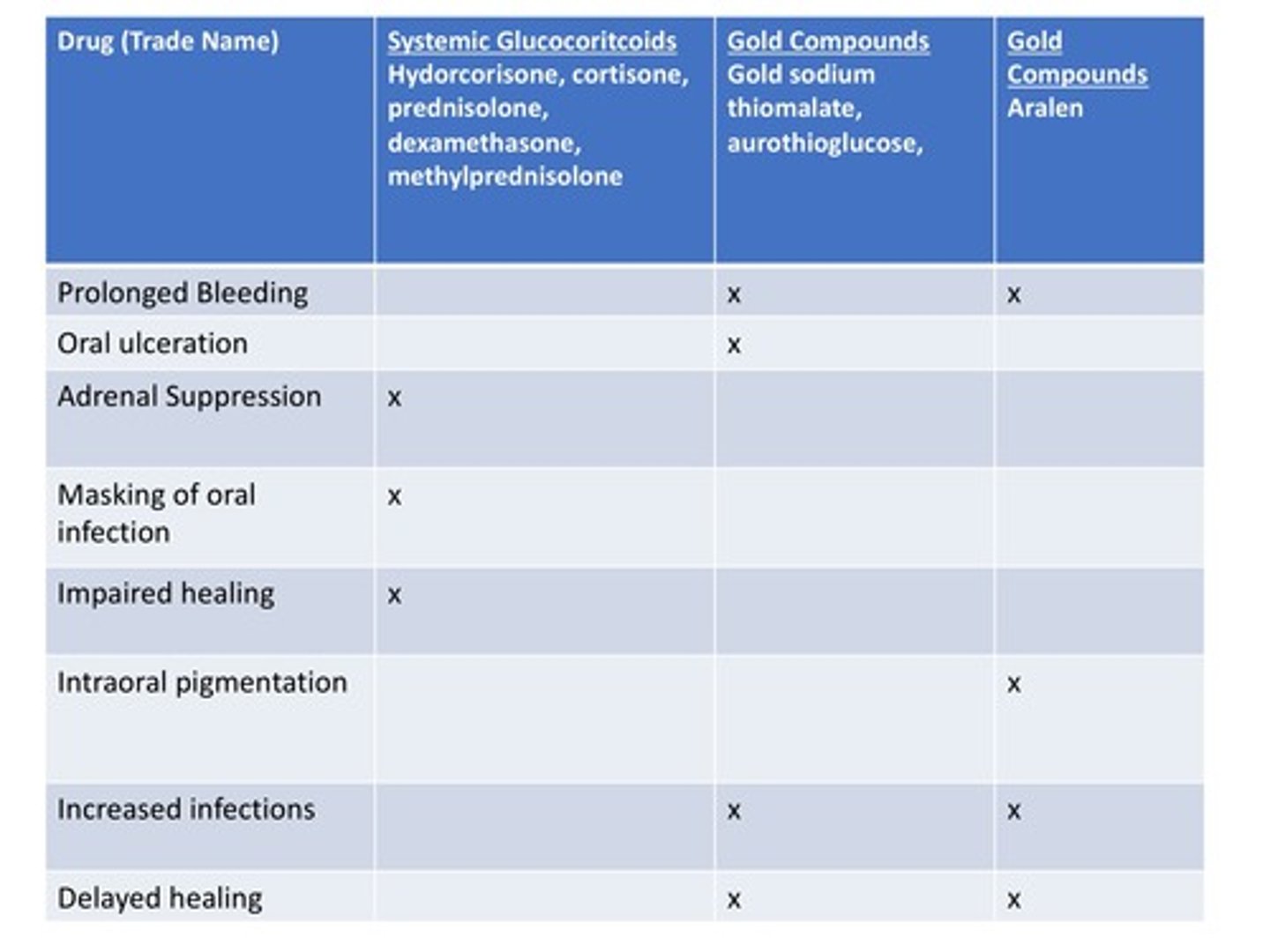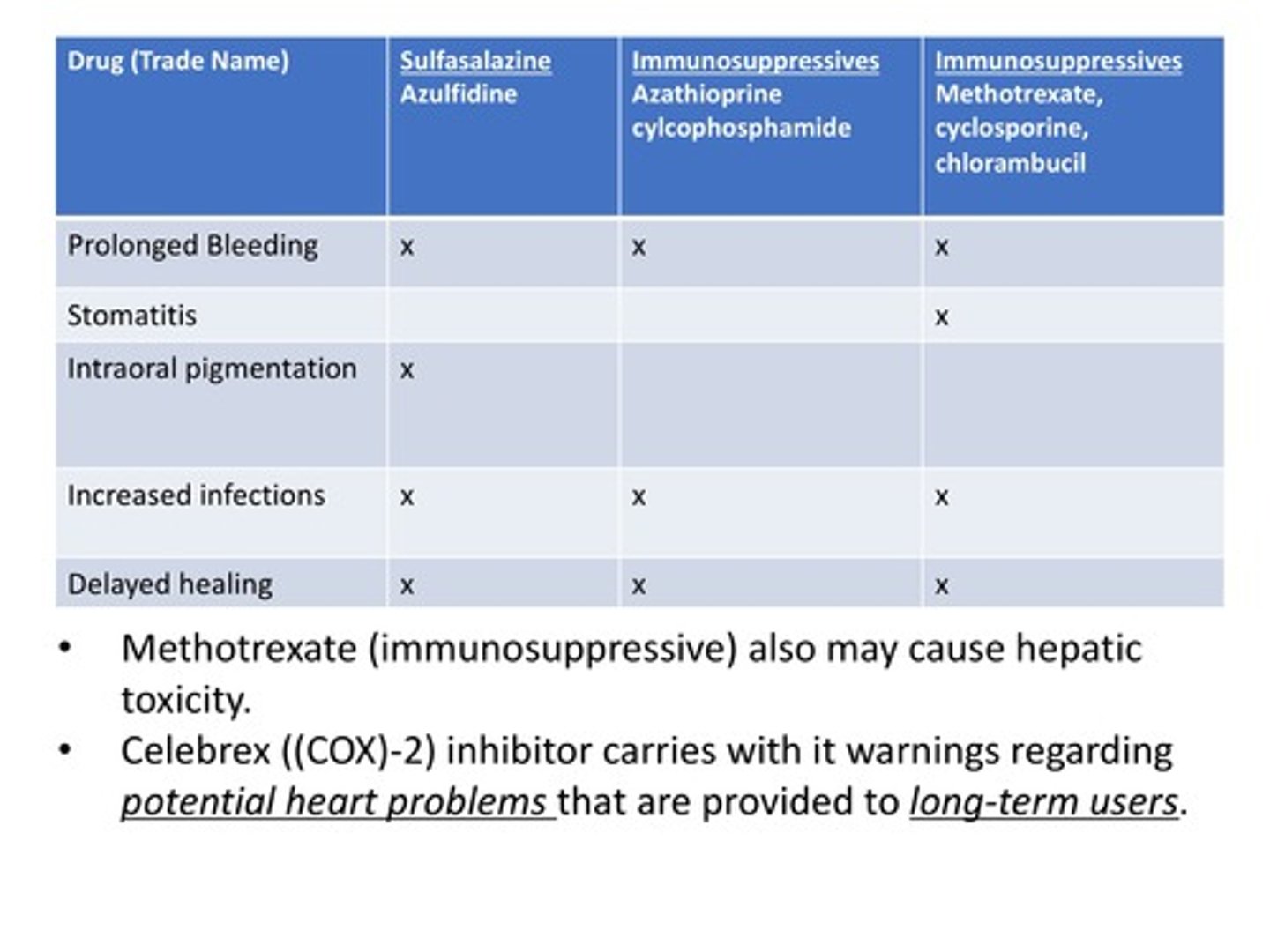Hygiene principles LO1/2 (rheumatologist and CT disorders) PART 1 and 2
1/30
There's no tags or description
Looks like no tags are added yet.
Name | Mastery | Learn | Test | Matching | Spaced |
|---|
No study sessions yet.
31 Terms
Rheumatoid diseases
Rheumatoid arthritis, osteoarthritis, psoriatic arthritis, systemic lupus erythematosus, and Sjögren syndrome are the most common forms of ———————— diseases.
Disease is poorly controlled, undiagnosed, or uncertain diagnosis
When evaluating a patient you must determine whether or not rheumatoid or joint disorders exist, then obtain medical clearance if: (3).
Review

Review

Review

Thrombocytopenia
Abnormal bleeding due to —————————— is a potential problem in some patients with SLE. A coagulation profile that especially notes the platelet count and PTT should be obtained.
50 000
When obtaining a platelet count for a patient with SLE, a count greater than —— ———/ųL is an indication of adequate platelet activity.
No
For patients with total joint replacements, and orthopedic pins, plates, and screws, are prophylactic antibiotics indicated?
Yes
For patients with inflammatory arthropathies such as: rheumatoid arthritis, systemic lupus erythmatosus, disease, drug, or radiation-induced immunosuppression. Or patients with insulin dependant (type 1) diabetes, previous prosthetic joint infections, malnourishment, or hemophilia, are prophylactic antibiotics indicated?
Psoriatic arthritis (PsA)
This develops in 5% to 7% of patients with psoriasis. Most cases arise in patients with established cutaneous disease. Some patients (particularly children) have arthritis that antedates the appearance of the skin lesions.
No
Do patients with psoriatic arthritis usually require prophylactic antibiotics?
Giant cell arteritis (GCA)
This is a systemic vasculitis involving medium-sized and large arteries. ——— (temporal arthritis) is the most common form of vasculitis. This inflammatory disorder affects women more than men. Approximately ——% to ——% of patients with ——— also have polymyalgia rheumatica. Because of the occlusive nature of the narrowing of vascular lumen, cranial pain, blindness, transient ischemic attacks (TIAs), and other strokes are common complications in patients with GCA.
Erythematosus (LE) and discoid (DLE)
There are 2 types of lupus:
Discoid (DLE)
This type of lupus predominantly affects the skin. DLE is characterized by chronic, erythematous, scaly plaques on the face, scalp, or ears. Rashes/scaring on the face or inside of the mouth. Most patients with this type of lupus have very few systemic manifestations, and the course tends to be benign.
Systemic form (SLE)
This type of lupus affects multiple organ systems. This type of lupus involves the skin and many other organ systems and is the more serious form. It is an autoimmune disease and a strong familial aggregation exists. Caused by genetically determined immune abnormalities that can be triggered by exogenous and endogenous factors. Among these triggering factors are infectious agents, stress, diet, toxins, drugs, and sunlight.
Butterfly
The classing picture of SLE is that of a woman with polyarthritis and a ——————— shaped rash across the noise and cheeks.
76%
Arthritis is seen in as many as ——% of patients with SLE. It affects small joints and in migratory, and the pain typically is out of proportion to the signs.
No
Is lupus an indicator for prophylactic antibiotics?
2-3 months
Clients with autoimmune diseases must be placed on — to — month recare intervals because of their compromised immune system.
5%-25%
Oral lesions of the lips and mucous membranes report to occur in up to —% to ——% of patients with SLE. Lesions are nonspecific, may be erythematous with white spots or radiating peripheral lines.
Sjögren syndrome (SS)
This is a rheumatologist disease. Autoimmune disease complex. Causes exocrinpathy, affects the salivary and lacrimal glands. This disease is characterized by keratoconjunctivitis sicca, xerostomia, and connective tissue disease (usually RA).
Primary and secondary
Sjögren syndrome (ss) manifests in 2 different forms:
Secondary SS
This form of SS consists of the keratoconjunctivitis sicca or xerostomia in the presence of a diagnosed systemic connective tissue disease.
Primary SS
This form of SS has a clinical manifestation of: primary ocular complication of keratoconjunctivitis sicca and various levels of salivary gland dysfunction (Xerostomia).
Female
More than ——% of all patients with SS are this gender:
4th or 5th
SS typically manifests during the the — and — decade of life.
Sialometry
This is useful as an initial screening tool for hyposalivation. Salivary flow collection must be performed precisely according to the type of gland and over a period of at least 5 minutes.
Parotid
Sjögren syndrome manifests as dry eyes, hyposalivation, and enlargement of these salivary glands:
Lymphoma
This type of tumour occurs in SS-1 patients at a rate higher than in the general population. Relative risk in patients with SS is 44 times normal and even higher (67 times) in those patients with SS-1 with chronic parotid enlargement.
1. Provision of moisture by lubrication by stimulation or simulation, 2. Treatment of secondary mucosal conditions (mucositis or candidiasis), 3. Prevention of oral disease/provision of maintenance and general support (such as nutrition).
Therapy for the oral component of SS may be classified into 3 major categories.
5%
The patient with SS may have less than —% of the normal quantity of saline to protect the oral cavity.